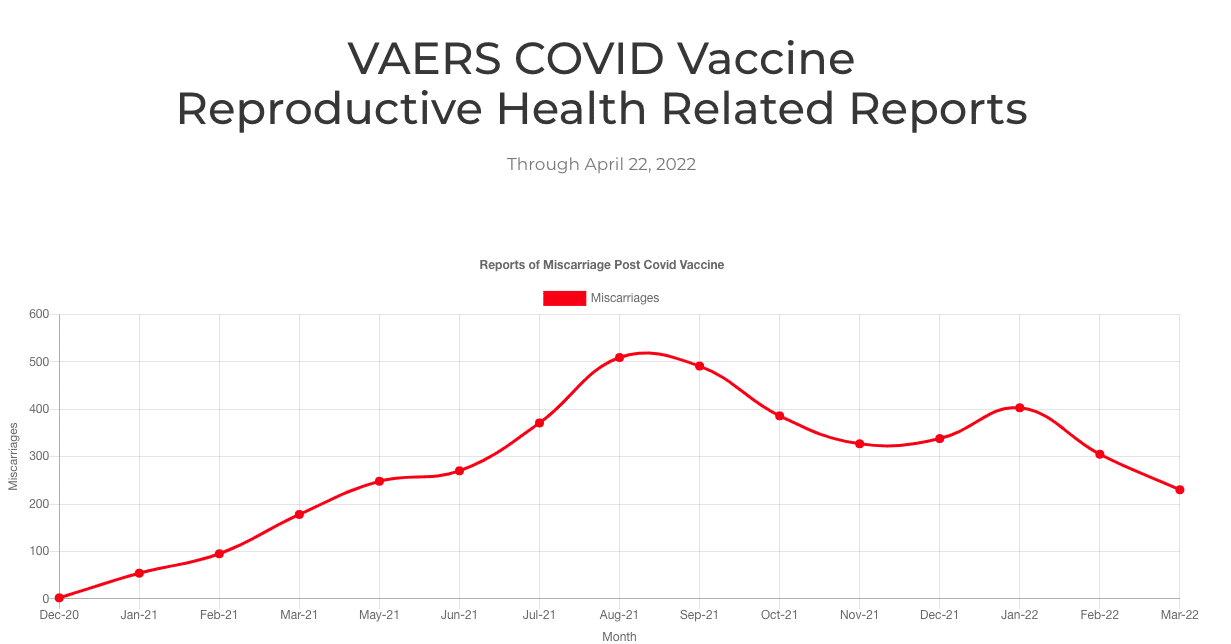Women’s health has long been a hot topic, and women are often caught in the crosshairs of political agendas that cause much confusion when it comes to selecting options with their best interest at heart. As more and more conventional treatment options for reproductive health have fallen under the spotlight of controversy, it is no wonder that many women are confused and seeking alternative options.
One such area of concern is fertility and how to best protect and nurture reproductive health. While infertility has been on the rise for several decades, in 2021, data from the Defense Database (DMED) showed a remarkable increase in fertility issues, including:
- A 155% increase in birth defects.
- A 471% increase in female infertility
- A 350% increase in male infertility
Similar data from VAERS shows an escalation in symptoms related to infertility, including: miscarriage, menstrual disorders, uterine haemorrhage, Caesarean, Preterm Labour, Birth Difficulties, stillbirth, as well as male fertility issues:
Many doctors have come forward to study this development and discuss the increase in infertility and “the new injection,” including Dr. Tenpenny, Dr. Northrup and Dr. Craig Turczynsk. These concerns ought to be carefully considered by any woman who plans on having children.
As Cilla discusses in HomeoMama, a virtual class about using homeopathy during pregnancy, birth and postpartum, there are many important factors to consider to promote a healthy pregnancy and birth. Here are a few to consider:
Artificial light. Excessive indoor lighting and screen use, especially in the evening, is can be very disruptive to our hormones. Dr. Northrup has shared about human biocycle disruption often.
Chemicals. From cleaning supplies to makeup, chemicals are abundant in our world. Men and women should both be aware of exposures to chemical exposures, especially fertilizers and pesticides. It is also essential to avoid plastics whenever possible. Avoiding conventional produce and foods is important as well, since links to diets high in nonorganic fruits and vegetables and infertility have long been established.
Medical procedures and prescription drugs. Be aware of side-effects of birth control, NSAIDs and antibiotics that are known to disrupt the gut microbiome, which is linked to infertility. Opt for natural options family planning options whenever possible. Avoid unnecessary medical procedures and do your research.
Infradian rhythm disruptions. Beware of health fads that advocate ketogenic diets, intermittent fasting, and High Intensity workouts and learn to cycle sync your diet and exercise. While beneficial to men, according to functional nutritionist and women’s hormone expert, Alisa Vitti from FloLiving, such practices disrupt the female 28-day hormone cycle (called the Infradian cycle), and have not been proven to benefit women during their fertile years.

Eat nutrient dense. Traditional diets, which include liver, butter, raw milk and egg yolks have been proven beneficial to increasing fertility.
Add in essential superfoods. Foods high in healthy fats and iron promote fertility by supplying essential micronutrients, as do Royal Jelly, turmeric, cinnamon and leafy greens.
Consider supplementing hormone-supporting nutrients. B6, magnesium, D3, Iron, Probiotics and Zinc may be important supplements to consider supplementing with if you do not get them in your regular diet.
Consider having a constitutional consult. Constitutional care prior to pregnancy can address miasms, minimizing the potential of passing these down to unborn children.
If you are already pregnant, or planning to be pregnant, you may want to consider taking HomeoMama, our virtual course that offers homeopathic advice for addressing common symptoms during pregnancy, birth and postpartum.
——————————————————————————————————-
Interested in getting our guide on newborn procedures?
It includes information on:
- 4 common newborn procedures
- What you need to know
- Alternatives
- Research and study references

